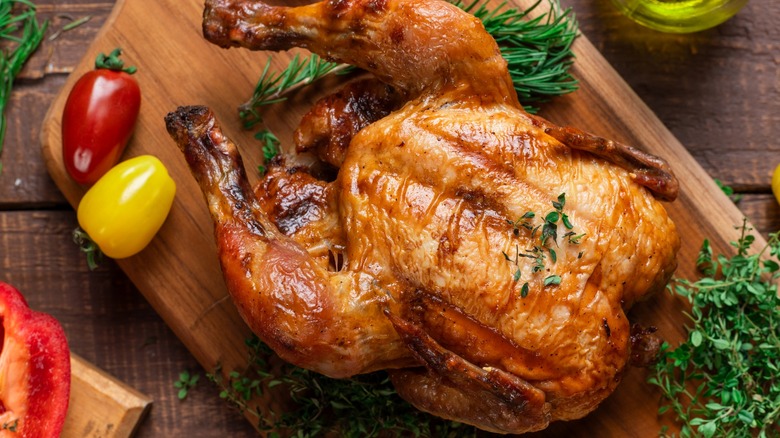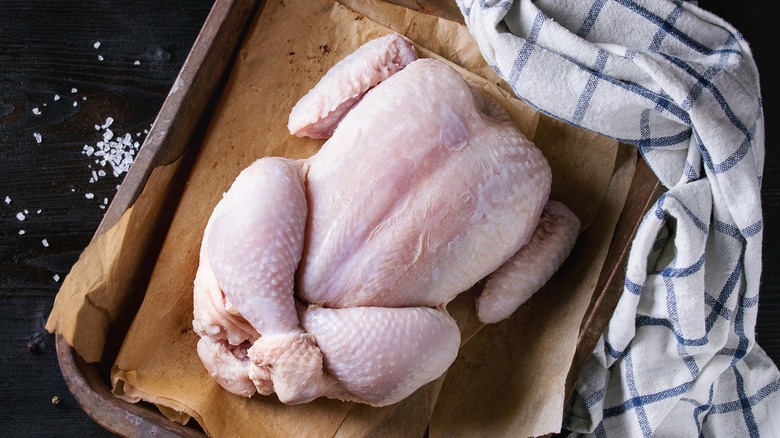The Chicken Roasting Mistake To Avoid For The Crispiest Skin
There's plenty of appeal to a succulent roasted chicken, but we all know the best part of the bird is the salty, crispy skin. Sure, it's edible without that crackling outer layer, but if it's chewy, you can't help but feel all its potential was wasted. There are hacks to get chicken skin crispy by using boiling water or rubbing baking powder over the bird, yet all the tricks in the world won't save it from becoming a gummy reminder of what could have been unless you avoid the one mistake that essentially ensures it won't be appetizing.
Marissa Stevens, recipe developer and founder of Pinch and Swirl, shared some advice with us about achieving the ultimate crackling on the meat, and it all comes down to water content. "Moisture is the enemy of crisp skin," she said. "If the surface of the chicken is still damp, the heat spends too long evaporating that moisture instead of browning the skin." If you leave the bird in the oven long enough, the moisture will eventually dissipate, and the outer layer will get crunchy. However, the meat hiding underneath will overcook. Even the crispiest chicken skin won't save a dry bird.
Balancing the time it spends in the oven so the skin gets crispy and the flesh stays moist is the ultimate goal — something too much water on the surface will prevent. "That delays the Maillard reaction and can leave you with rubbery, waterlogged skin instead of the crispy texture most of us want," Stevens said. Thankfully, there are a couple of simple ways to dry out the poultry that will help you avoid a chewy disaster.
The best ways to avoid rubbery chicken skin
To prevent the skin from becoming rubbery, it's essential to avoid picking out a bad chicken from the grocery store. It can cost a little extra, but if you notice chicken labeled "air-cooled" in the meat department, it's worth the splurge. Because it hasn't been chilled in water, it should contain less moisture to begin with, which makes your next steps a bit easier.
Before the poultry ever gets near the oven, take as much time as necessary to make sure it's completely dry on the outside. "Pat the skin dry with paper towels, then let the bird rest uncovered in the refrigerator for at least a few hours — ideally overnight," Stevens said. "This draws out surface moisture and tightens the skin slightly, which helps it brown faster." Don't forget all the inconspicuous spots where water can hide, like under the wings and in between the thighs. You will also want to pay special attention to the cavity of the bird. It can contain a lot of moisture, which creates steam and hence a soggy chicken skin.
Another technique to consider that's sometimes used for crispy chicken thighs is called dry brining. Stevens recommends this, as well as removing the moisture with paper towels, saying, "I also salt the skin before it goes in the fridge, which helps season and dry it out further." You don't want to skimp on the salt when dry brining. It might seem excessive when you do it for the first time, but roughly two tablespoons of salt for a four-pound bird is needed to avoid chewy chicken skin.

